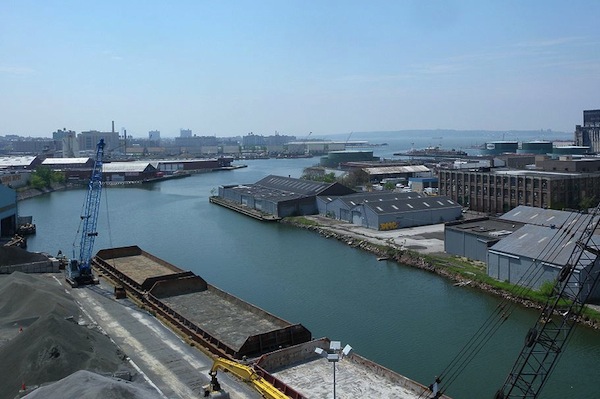
Photo by: Jim Henderson
The canal has been known as a health hazard for more than a century. It also supports wildlife, recreation, industry and–increasingly–residential development.
When the Environmental Protection Agency was mulling declaring the long-polluted Gowanus Canal a Superfund site, opposition from the Bloomberg administration revolved around whether the move would stymie new housing development in the area.
For a time it looked like the then-mayor was right: One major site on the west bank of the beautiful but extremely toxic waterway was abandoned by builders.
But a walk past that very site this summer was punctuated by the sound of piles being driven and the sight of hardhats through holes in the construction fencing. And now the EPA says the developer of that project, Lightstone Group, has agreed to do $20 million in testing and remediation work to address contaminants embedded in the soil where their new residential complex will rise.
Among other elements of the proposed settlement, EPA says Lightstone has agreed to remove 17,5000 cubic tons of contaminated soil to “facilities licensed to receive the waste” and to fortify the shoreline along its property to keep any leftovers from getting into the drink.
Comments on the carr.brian@epa.gov.
CityLimits.org recently surveyed all three New York City Superfund sites and found little evidence the clean-ups had affected development much at all.







